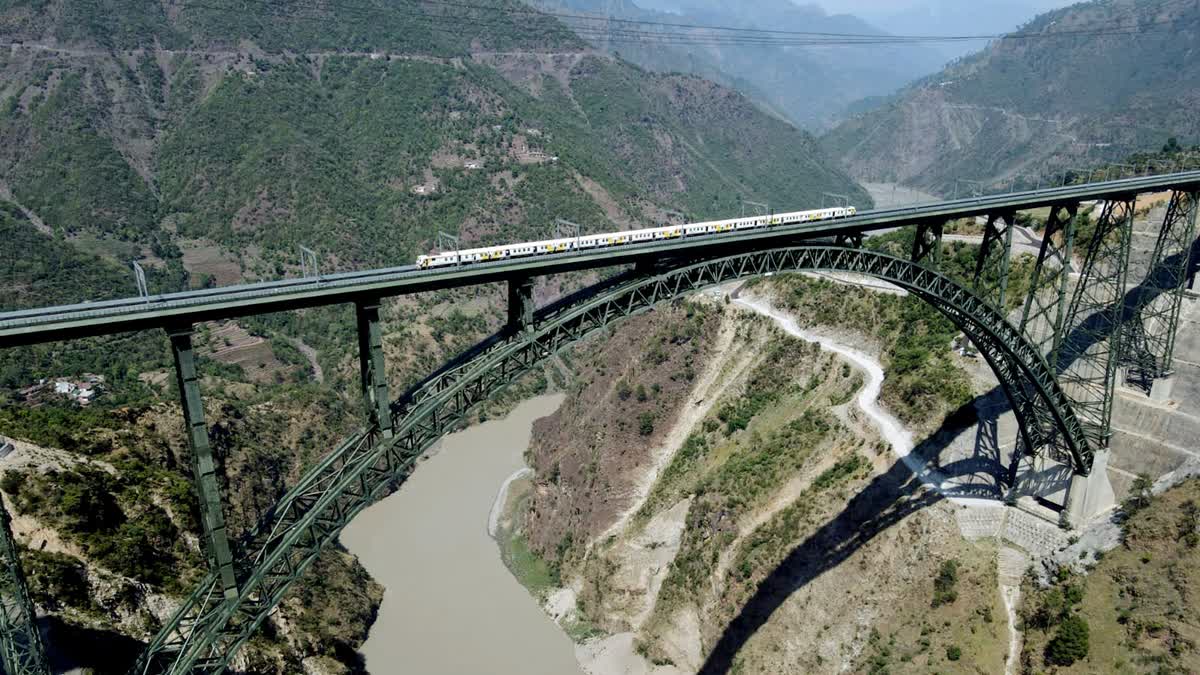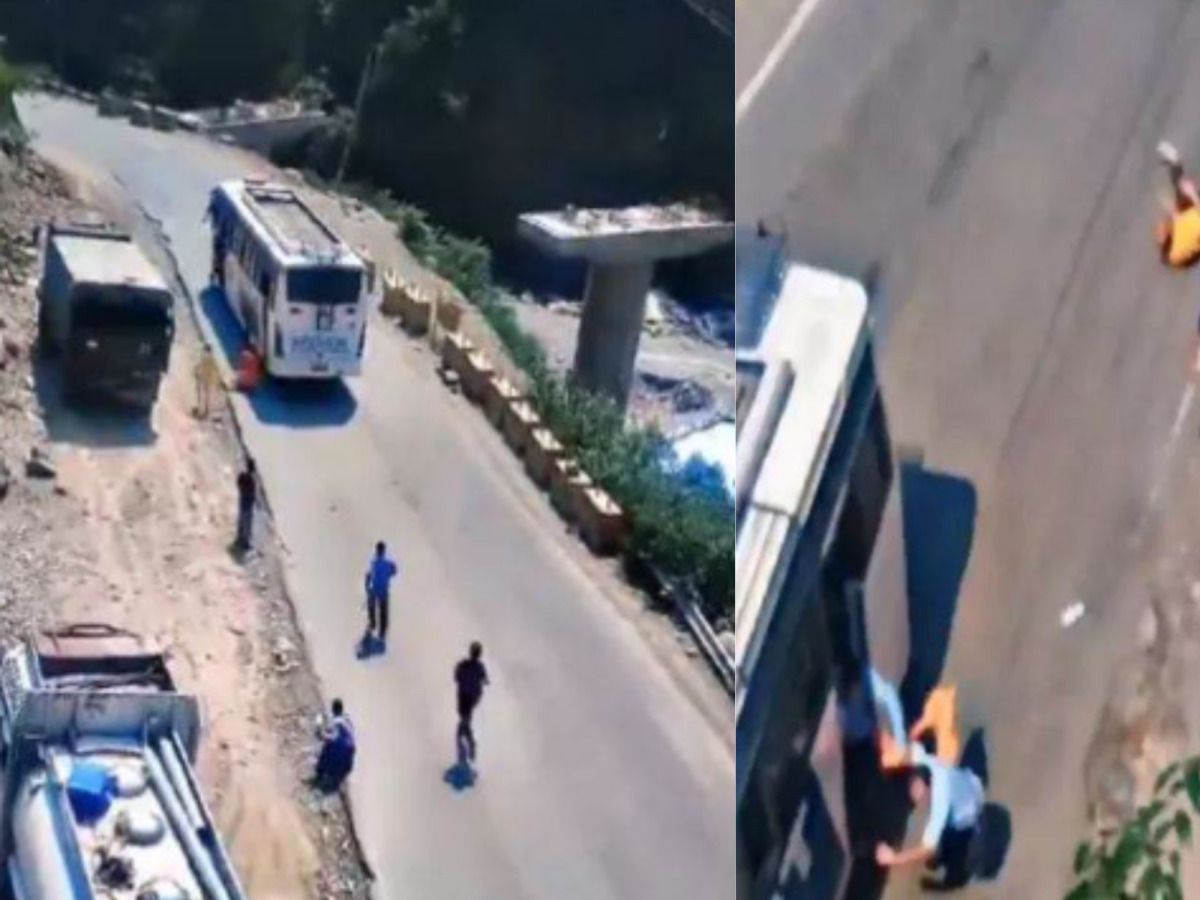Bridging the Divide: A New Chapter in Kashmir’s Journey
Srinagar 09 June 2025: The launch of the Vande Bharat Express between Katra and Srinagar isn’t just a milestone in railway infrastructure — it’s a defining moment for the socio-economic and emotional integration of Jammu and Kashmir (J&K) with the rest of India. It comes at a time when the Valley continues to recover from the trauma of a recent terror attack on tourists in Pahalgam, making this launch not only a feat of engineering but a symbol of resilience, healing, and unity.
This ambitious rail project overcomes some of India’s most formidable terrain — steep ridges, river gorges, and snow-clad mountains — to offer a cost-effective, reliable, and high-speed travel alternative. But beyond the track lies a deeper story — of opportunity, economic growth, emotional healing, and national integration.
Engineering Marvel Meets Human Aspiration
Built over one of the highest-altitude railway alignments in the country, the USB Rail Link (Udhampur–Srinagar–Baramulla) project has not only conquered mountains but bridged decades of isolation for Kashmir. With its launch, the region inches closer to true connectivity in every sense — geographical, economic, and emotional.
Key Highlights:
- Reduced Travel Time: Katra to Srinagar in just 3 hours by rail — compared to 6–10 hours by road.
- All-weather Access: Designed to withstand harsh winter conditions, ensuring mobility year-round.
- High Frequency: With two services daily, the route promises flexibility and convenience for passengers.
This connectivity is not just about speed. It’s about transforming how people, goods, and ideas move across the region, fostering interaction and opportunity like never before.
Tourism on Track: Kashmir’s Hospitality Gets a Boost
Reinventing the Kashmir Experience
Tourism, the backbone of J&K’s economy, is expected to see a surge with the Vande Bharat Express. Trains make travel not only affordable and predictable, but they also transform the journey itself into part of the tourism experience.
Scenic Journeys, Local Discoveries
From the rolling hills of Jammu to the meadows of the Valley, the train journey can redefine the tourist’s experience. Stopover towns like Banihal, Qazigund, and Anantnag are poised to become tourist hubs, drawing attention to lesser-known gems of Kashmir.
Economic Ripple Effect:
- Increased hotel bookings and hospitality demand.
- Rise in local crafts and food vendors along the route.
- Winter tourism expansion as trains offer an alternative when flights are disrupted.
Horticulture & Freight Corridors: A New Lifeline for Farmers
Fruits of Labor, Faster to Market
Kashmir’s fruits — apples, cherries, plums — are known across India, but transporting them efficiently has long been a logistical nightmare. Now, with high-speed freight rail options, perishable produce will reach markets on time, minimizing waste and maximizing profit.
Economic Potential:
- Horticulture contributes nearly 10% of J&K’s GDP.
- Thousands of livelihoods depend on efficient logistics.
- Cold chain and freight stations near rail hubs will revolutionize Kashmir’s agri-trade.
Societal Harmony Through Rail Connectivity
Connecting People, Healing Divides
Trains are not just mechanical connections — they’re social bridges. Increased mobility brings cultural exchange, breaking down psychological walls built by decades of conflict, isolation, and fear.
Less accessible regions often develop siege mentalities, a fear of outsiders, and internal fragmentation. But with trains, Kashmiris can travel more freely across India, and vice versa.
Building National Trust:
- More interactions between youth, traders, students, and tourists.
- Greater awareness and empathy across regions.
- Shared experiences foster trust, understanding, and peace.
A Historical Perspective: From Isolation to Integration
Just as the abrogation of Article 370 redefined the political framework of Jammu & Kashmir, the Vande Bharat project serves as the geographical and economic milestone in India’s nation-building narrative.
Where once roads defined boundaries, railways now redefine belonging.
Post-370 Developments:
- Increased central investment in infrastructure.
- Boost in domestic tourism.
- Focus on development as a counter-narrative to conflict.
Psychological Uplift: Hope on Steel Rails
The symbolism of a sleek, modern train reaching Srinagar — a city once synonymous with curfews and conflict — is not lost on the people of Kashmir. It restores confidence. It signals that the future can be different. That hope is tangible.
Voices from the Valley:
“This isn’t just a train. It’s a lifeline,” says a shopkeeper in Anantnag.
“Finally, we feel seen and included,” remarks a student heading to Delhi for university.
Trains as Peacebuilding Tools:
Infrastructure can pave the path to peace — not just through commerce, but through communication and coexistence.
Challenges Ahead: Not Without Speedbumps
Despite the optimism, the road — or rail — ahead won’t be without hurdles.
Potential Obstacles:
- Security risks due to residual militancy.
- Environmental concerns in ecologically sensitive areas.
- Maintenance of infrastructure in snow-prone regions.
- Ensuring affordable pricing for local travelers.
The Road — and Rail — Ahead
This train is not just a steel beast hurtling through mountains. It’s a message. A manifestation of India’s commitment to inclusive growth. For J&K, it could mean a new economic dawn, a shift in global perception, and a fresh narrative centered on development.


